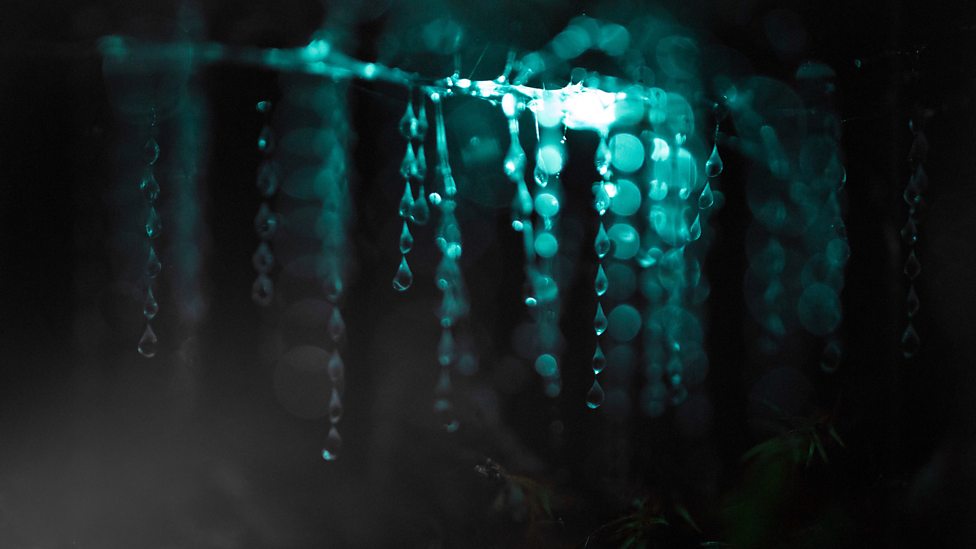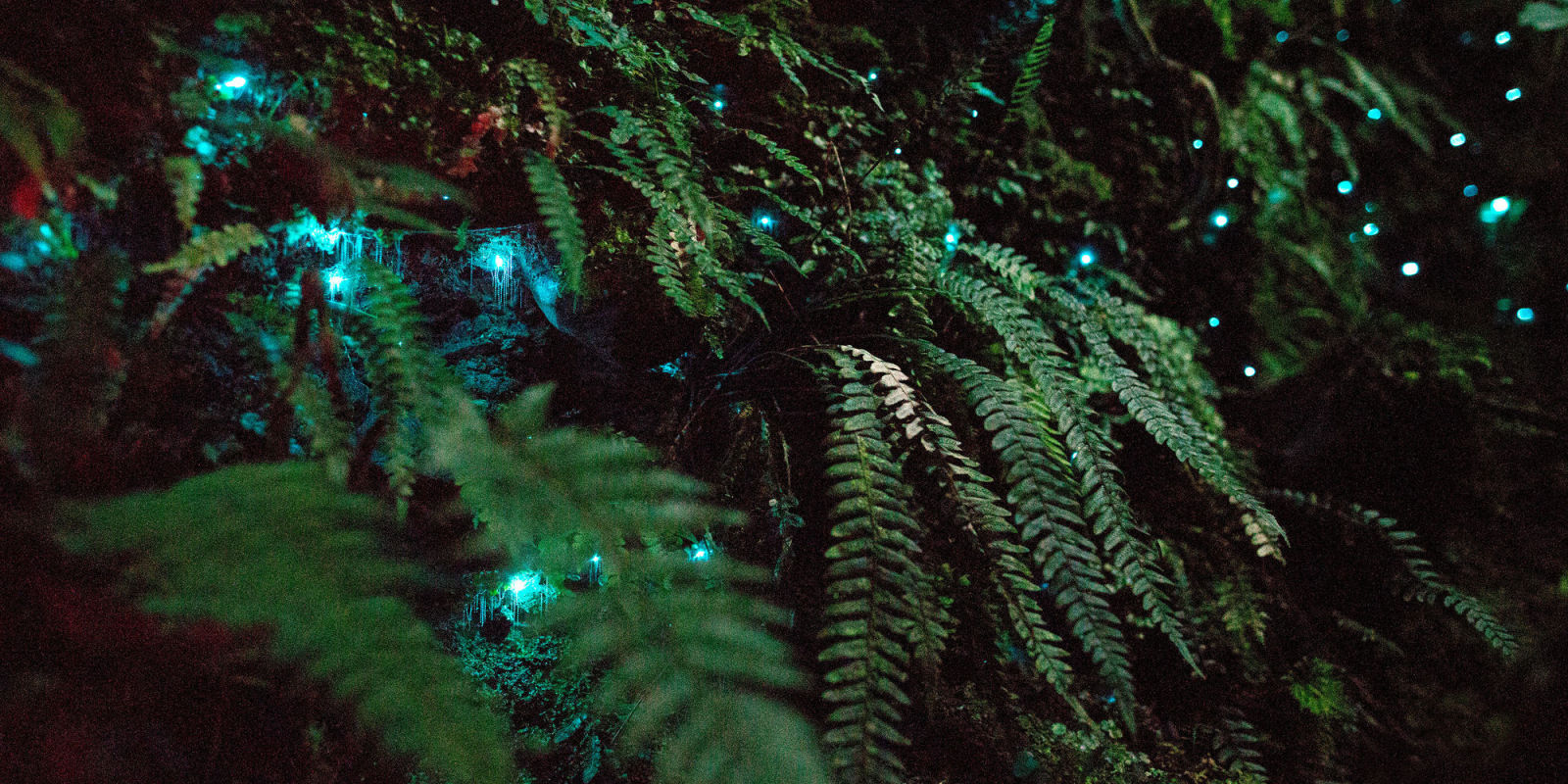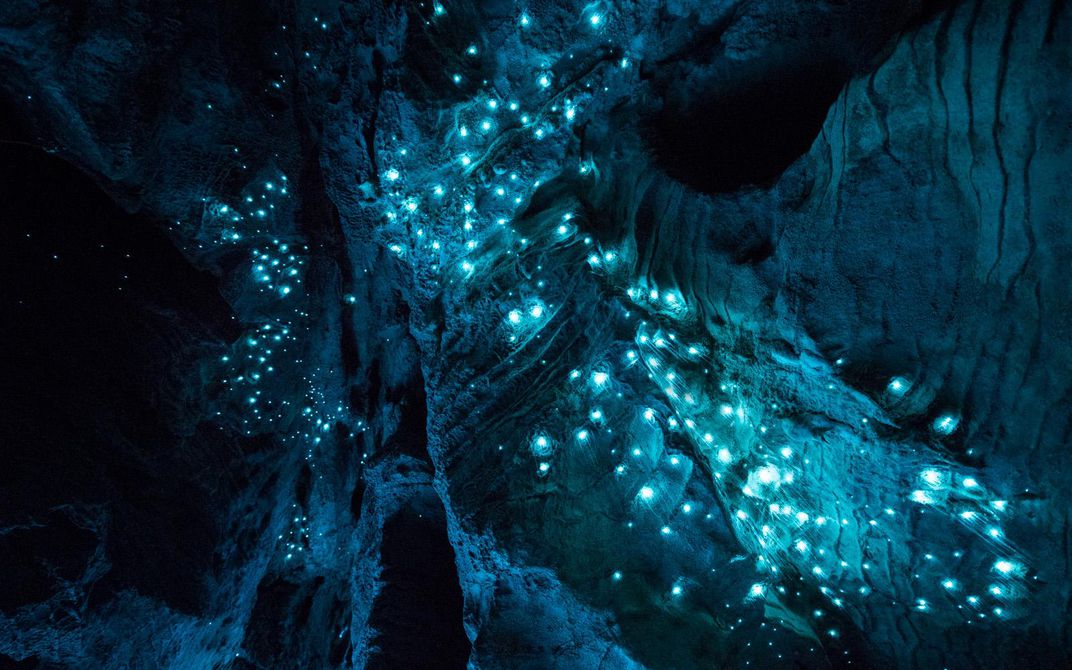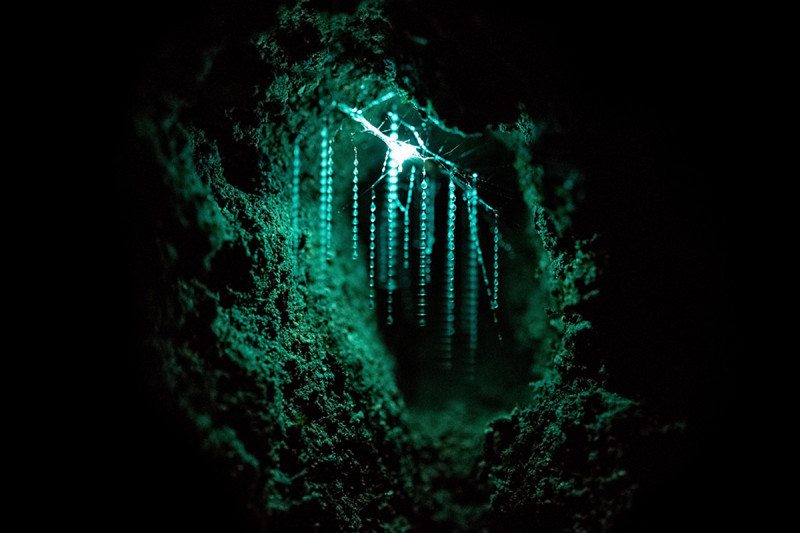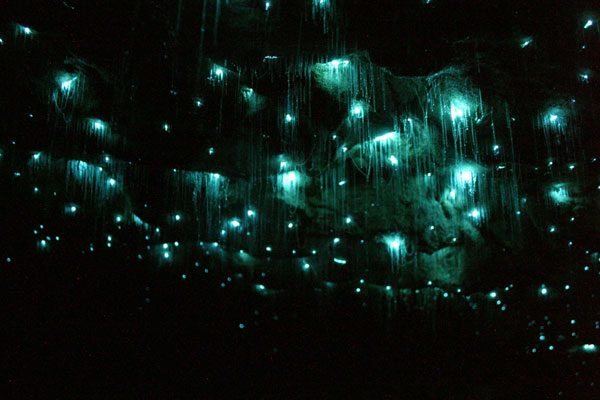The O’Reilly’s Experience
What does it truly feel like to descend upon O’Reilly’s Glow Worm grotto
on an evening guided tour?
Journalist Celeste Gill recounts:
We’re walking single file, torches to the ground to ensure we place one foot in front of the other and don’t slip into the creek. I can vaguely see my breath dancing in the cool night air in front of my face. The sounds of the rainforest surround us between the crackling of leaves and twigs beneath our feet.
“Okay, turn off your torches,” our guide Martin says. “They don’t like the light.” It takes a few seconds for my eyes to adjust, but then we see them; spread out before us like a blanket of fireflies, their glow slowly becomes brighter, and brighter. There must be thousands of them. It’s like a miniature Milky Way clutching at the bushes that line the creek.
“Luminescent larvae” is a sexy name for Glow Worms. “In reality they’re more like glow maggots,” Martin says.
Regardless of the name, these tiny creatures add an extra sprinkle of magic to the night in Lamington National Park.
Glow Worm Development
Put simply, Glow Worms are the larvae (or immature stage) of a small fly’s development. Interestingly, this larval stage is the only time in their life cycle in which they glow in order to attract small insects to feed.
Larvae are believed to live for approximately one year, by capturing their prey on snares – a sticky silk thread much similar to a spider’s web. Their famed predatory light in which they produce lures prey closer, tricking them into becoming entangled in the larvae’s silken threads. Once developed into adulthood, the flies unfortunately do not have working mouthparts, and therefore only live for two days to six days during which time they mate and lay eggs before perishing (and the life cycle continues).
Glow Worm Fun Facts
- Glow Worms are only found in New Zealand and Australia – in which there are eight
varied species. - The Glow Worms situated in South East Queensland have a scientific name
called Arachnocampa flava. - Despite their name, these luminous locals are not actually worms, but the larvae of
a primitive fly – the fungus gnat. - The most spectacular time to view the dense and wet rainforest grotto is during the
warmer, wetter months, from December to March. (Note: Hiking clothes and shoes
are recommended). - The light of a Glow Worm is also known as bioluminescence or light produced by a
living organism, which is emitted via a chemical reaction. - A pigment called ‘luciferin’; reacts with the enzyme ‘luciferase’ and adenosine
triphosphate (also called ATP*) and with the oxygen in the air, this reaction creates
the blue-green light that you see. - It is recommended not to shine your torch light directly onto the grotto as the light
can harm the Glow Worms.
See the Glow Worms at O’Reilly’s for yourself. Book your spot on the nightly glow worm tour
departing from O’Reilly’s Rainforest Retreat.
Here are some magical photos of some glow worms around the world
